Case study ARCHICAD – BD House
“BIM technology for Modular Prefab Housing Projects”
Company name: Vilalta Architects
Project Name: BD House
Project Location: La Garriga, Spain
Project Type, size: Residential, 200 m2 | 2,153 square feet
Project cost: €240.000 | US$273,000
Year of completion: 2018
Software used: ARCHICAD
BIM and ARCHICAD support: SIMBIM Solutions (GRAPHISOFT Distributor)
The “BD House” project in La Garriga, Spain, is the first prototype of a system of single-family homes designed by Vilalta Architects to be built with environmental and economic sustainability as a priority.
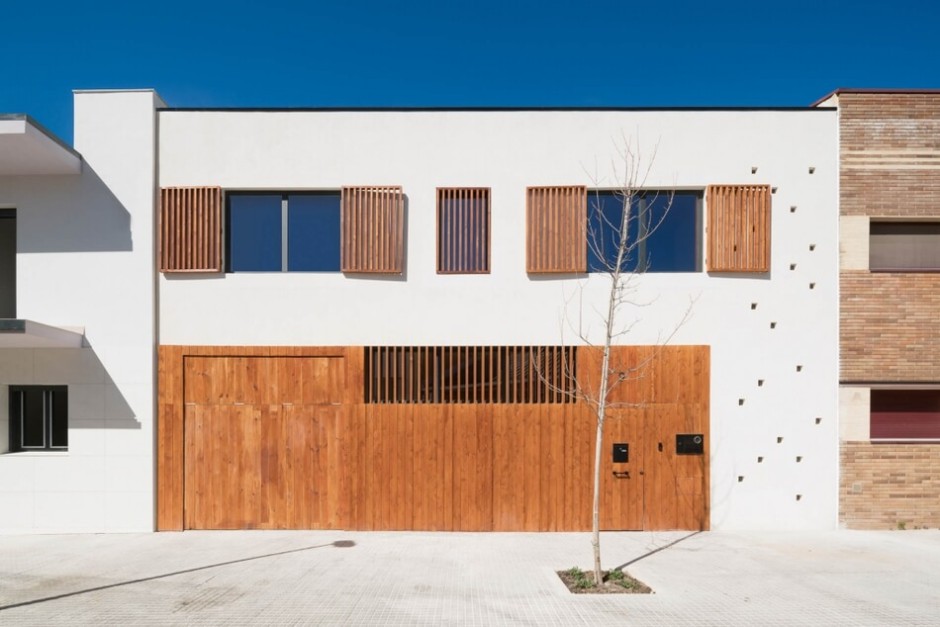
Photo: Mauricio Fuertes
Vilalta Architects is a Barcelona-based design studio operating in the fields of architecture, urbanism and design.
Declaring that “we love nature and we care about people,” Vilalta’s design philosophy is to connect the old and the new, co-opting and updating the best thinking of past traditions to create modern buildings that are both deeply respectful of the past and searingly contemporary.
It has been two years since they started using ARCHICAD. They chose ARCHICAD after doing research and learning that it was the optimal solution to work on MacOS. They have 10 workstations with six ARCHICAD licenses and three MEP packages. Previously, they used AutoCAD for 2D documentation and SketchUp, Rhino and 3ds Max for 3D modeling.
“It has totally changed our way of working, from the early drawings stage until the construction phases. Before working with ARCHICAD, updates and changes in the projects were long and not precise.” Xavier Vilalta, the Director of Vilalta Architects
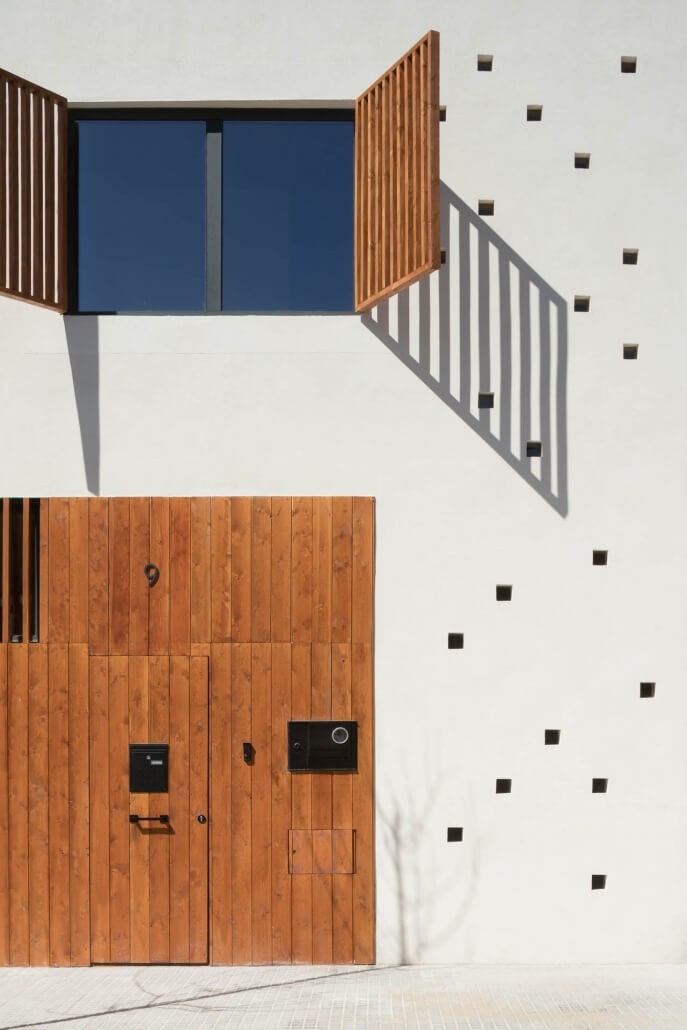
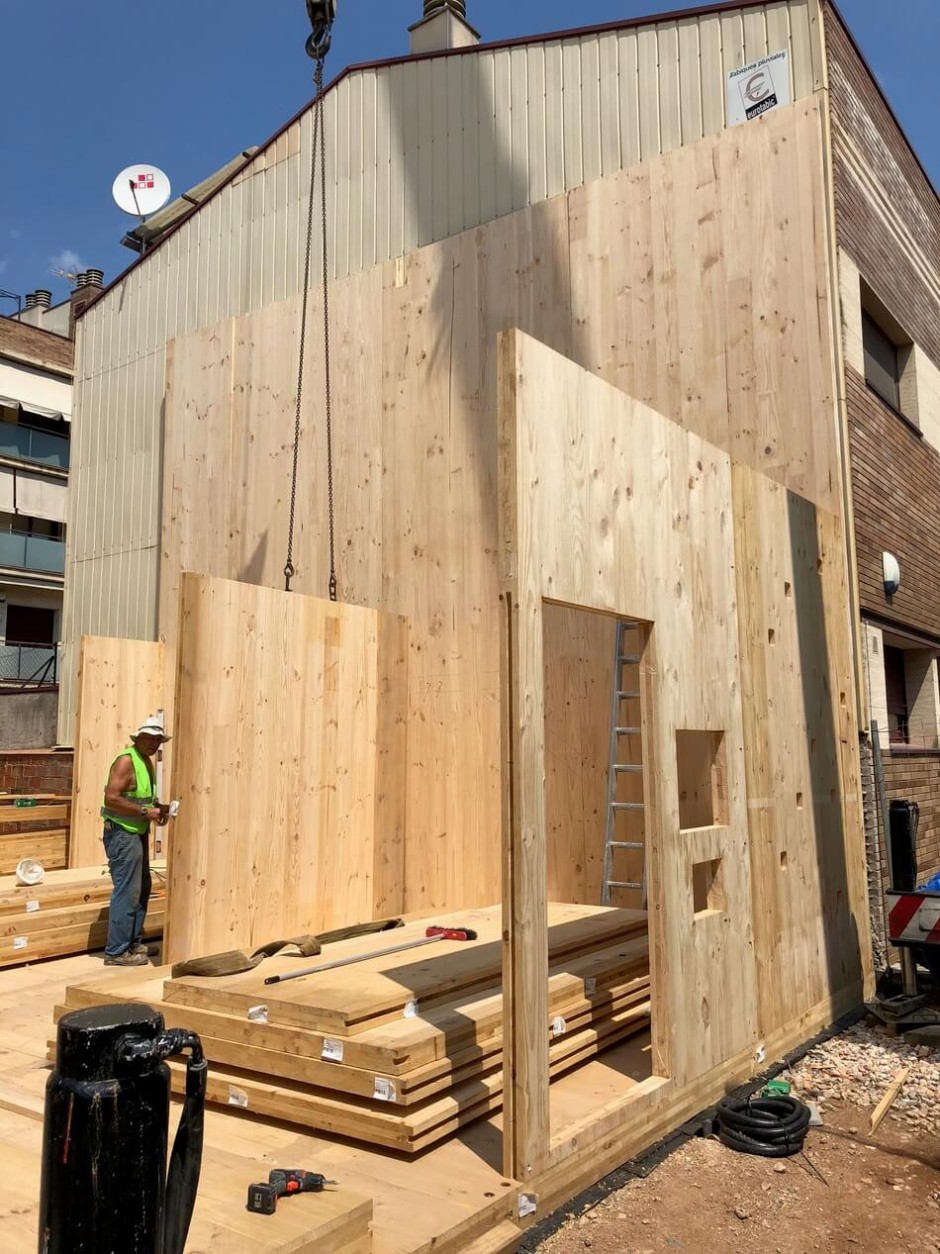 |
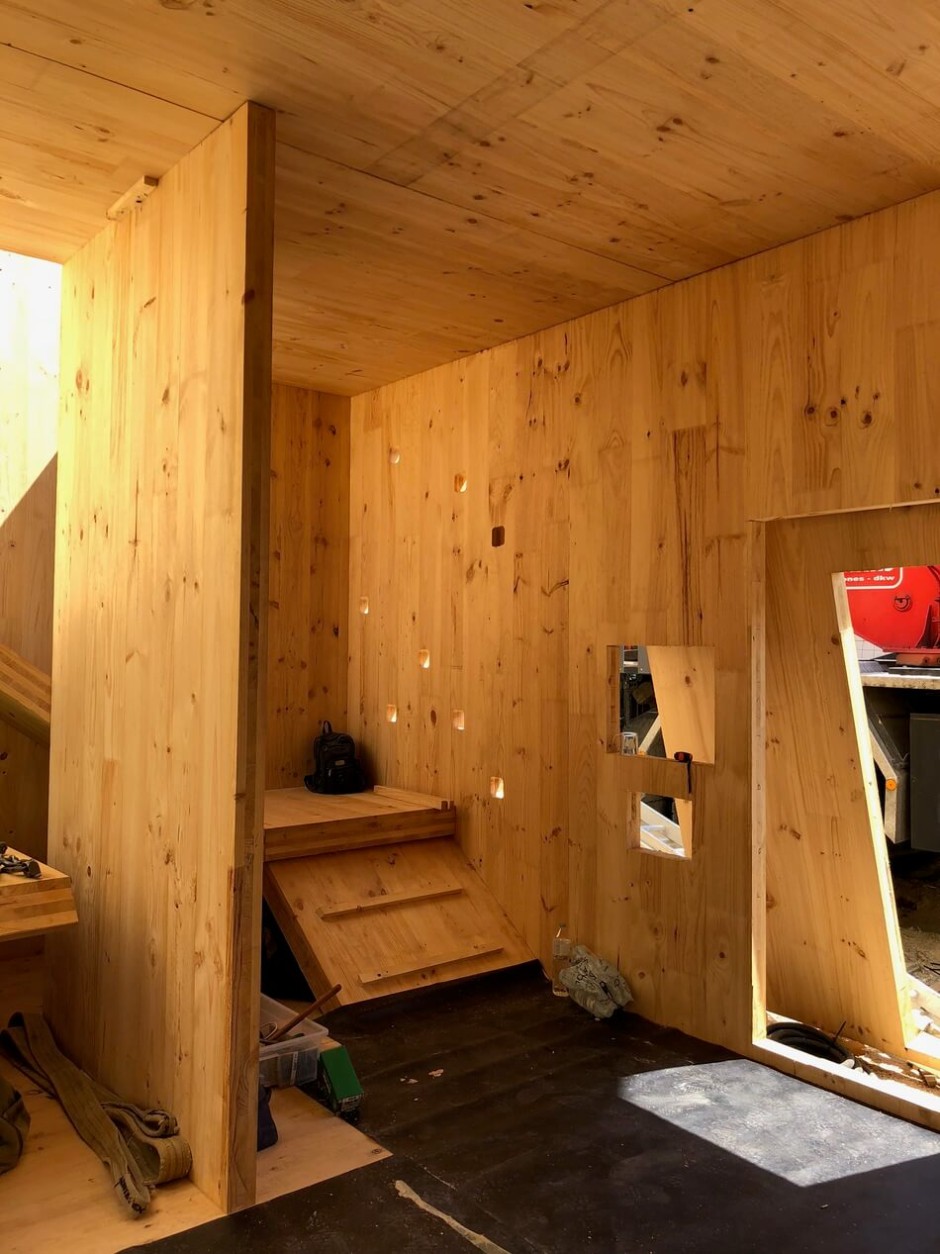 |
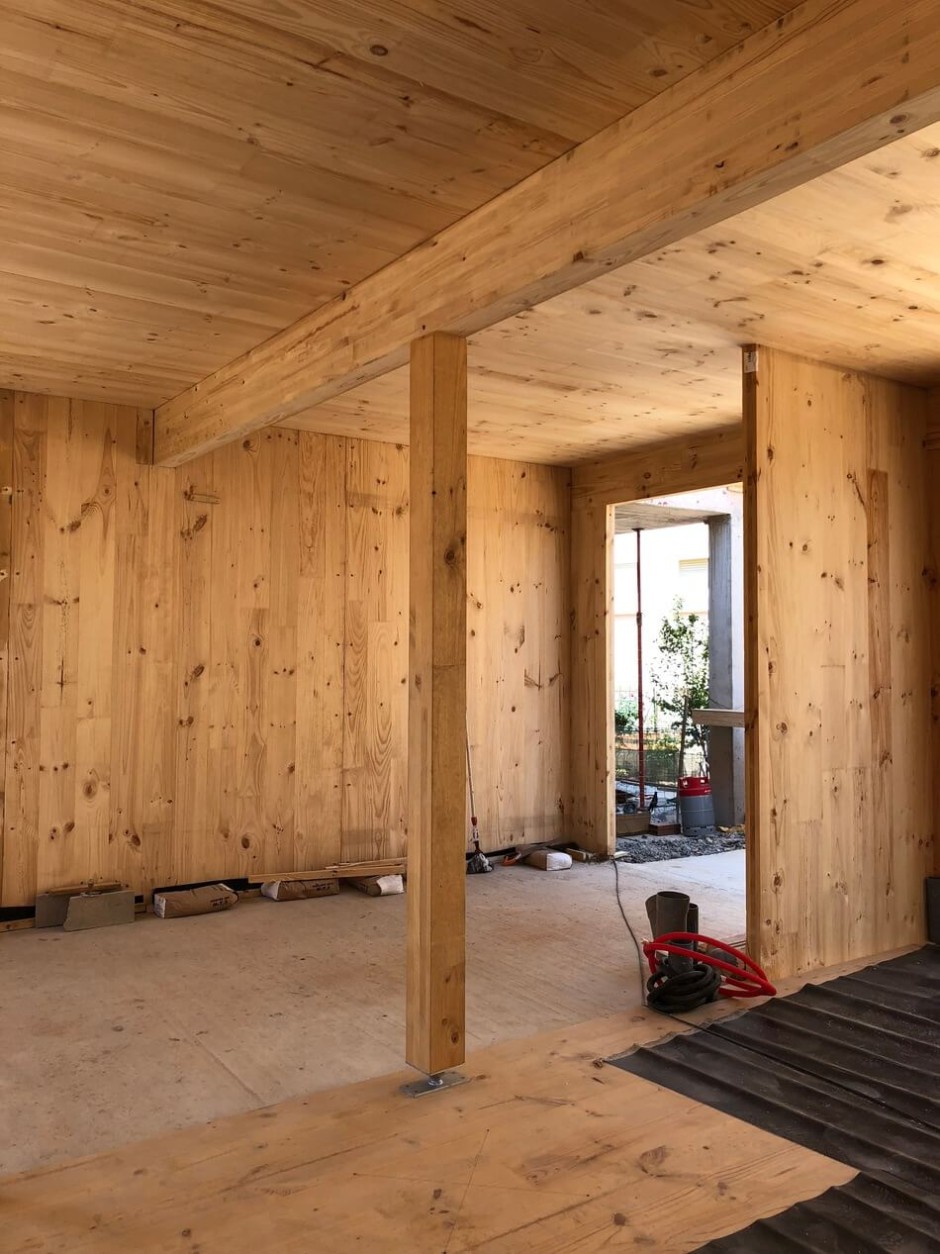 |
 |
 |
Details and precision play an important role during the design process of prefab construction. After all the pieces are manufactured, it’s necessary to assemble them with the same attention as in the drawings. BIM technology brings the precision of the digital project to the site, solving issues and possible errors or extra costs before construction begins.
Vilalta Architects used ARCHICAD to develop the BD House project and BIMx for site supervision. For rendering, Cinema 4D, already integrated in ARCHICAD, was preferred while BIMx was used for client presentations and for communication with the site managers.
According to Candela Juan, Project Manager at Vilalta Architects, BIM allows them to model the entire structure and the MEP in 3D, avoiding overlapping problems on site. Especially in a modular construction, built in a factory and assembled on site, it is very important to prevent surprises.
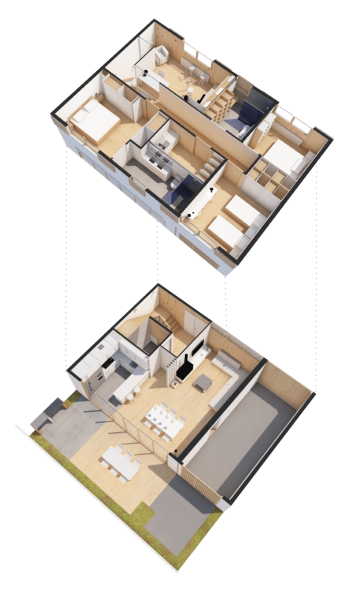
Design concept
This project is the first prototype of a system of single-family homes designed to be built with environmental and economic sustainability as a priority.
The most outstanding feature of the project is its material through the construction of CLT — laminated wood — in its entirety, being not only the structure but also the final finish of the house.
Wood construction, on its own, has a sustainable environmental cycle. Its dry construction speeds up construction and minimizes waste on site.
According to Dolors Ollero, Project Leader at Vilalta Architects, thanks to BIM technology, ARCHICAD and MEP modules, architects have incorporated all the services in a detailed way so that the coatings were the minimum necessary and thus reduced the costs considerably.
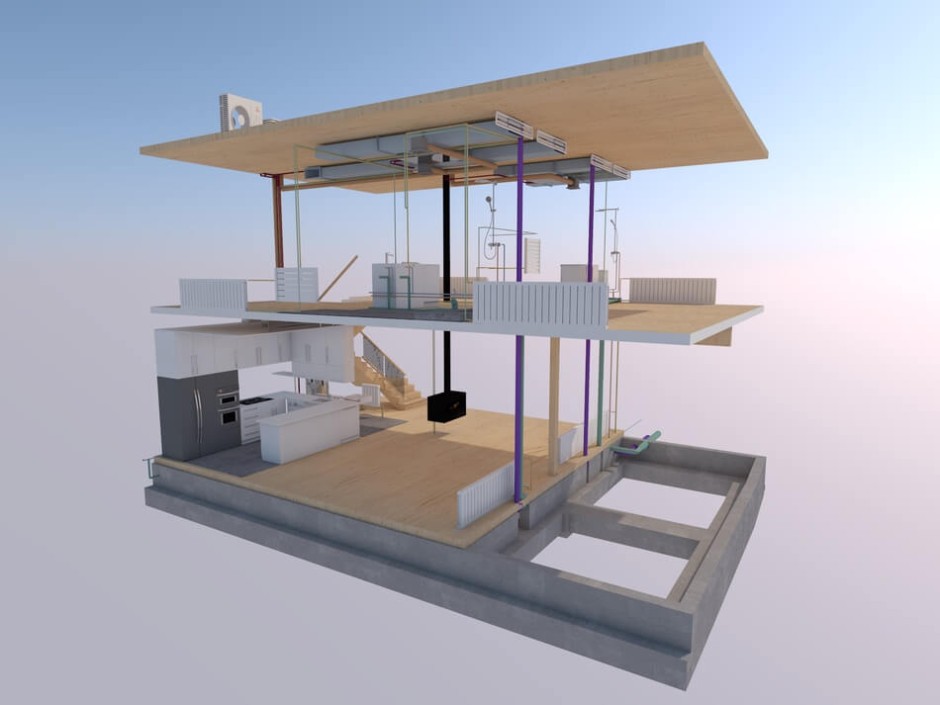

The workflow that Vilalta Architects followed for the BD House project: 3D modeling of the house with ARCHICAD; optimization of the library of materials and equipment with brand and specifications; construction details from sections; design of facilities thanks to the MEP tools (from a 2D scheme they drew the facilities using the MEP Routing function, avoiding possible collisions between them); list of elements such as doors and windows according to categories (these lists were very helpful in creating the bill of quantities faster and more accurately); visualization on site thanks to the BIMx tool and renders to explain each space to the clients, the contractor and sub-contractors; quick update of plans with the publish settings; coordination with other specialties through IFC export.
Thanks to this workflow, they managed to significantly streamline the process of creating the project, as well as the preparation of documents for the municipality and for construction. Communication using images, 2D documentation, renders, and BIMx models between different stakeholders who participated in the process, such as clients, constructors and sub-contractors, was also improved.
Vilalta Architects use Teamwork in order to work at the same time with all the designers on the project. Sharing the file makes the workflow easier and faster and the project is reviewed and modified simultaneously. They share the file in two different ways: either they export it as an .ifc, .bimx or .pdf file, or they grant access to the Teamwork file to other users.
BIMx helps them communicate ideas with their clients and to coordinate the on-site work. The clients can explore the 3D model and check if the result is what they expected; if there are modifications, the architects can explain these at the worksite the same way.
Architects send updated versions of the BIMx model to the clients and contractors with Dropbox so they can download it to the tablet and access it even when they don’t have an Internet connection. In this project, clients, contractors and other third parties appreciated the visualization through BIMx files and the level of precision on the overlap of structure and services in the project.
Vilalta Architects considers it a very successful project; thanks to BIM technology, they achieved excellent results and minimized errors on site when assembling both the structure and the installations.
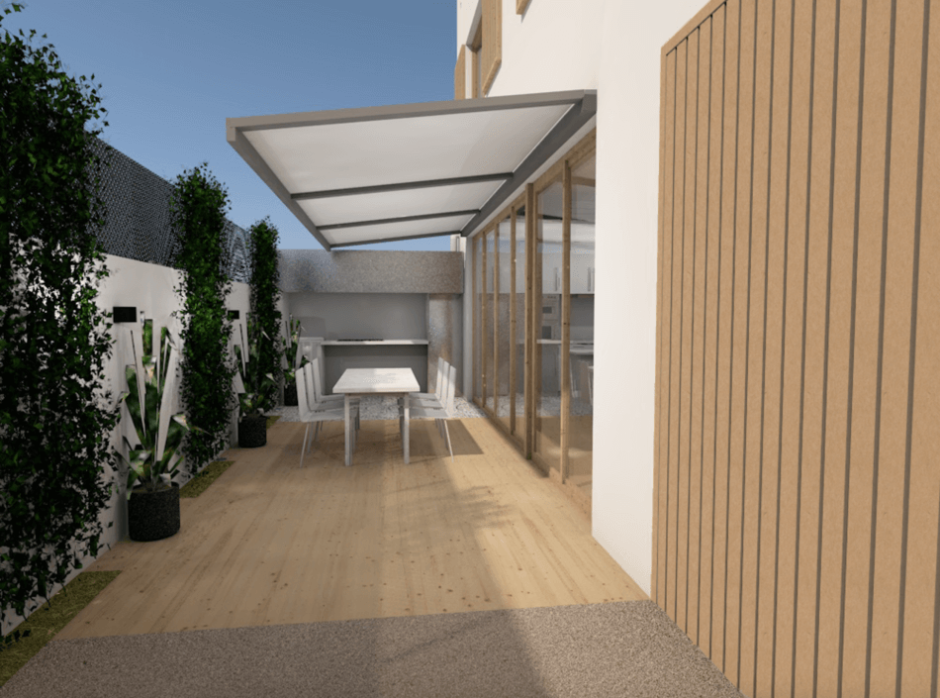 |
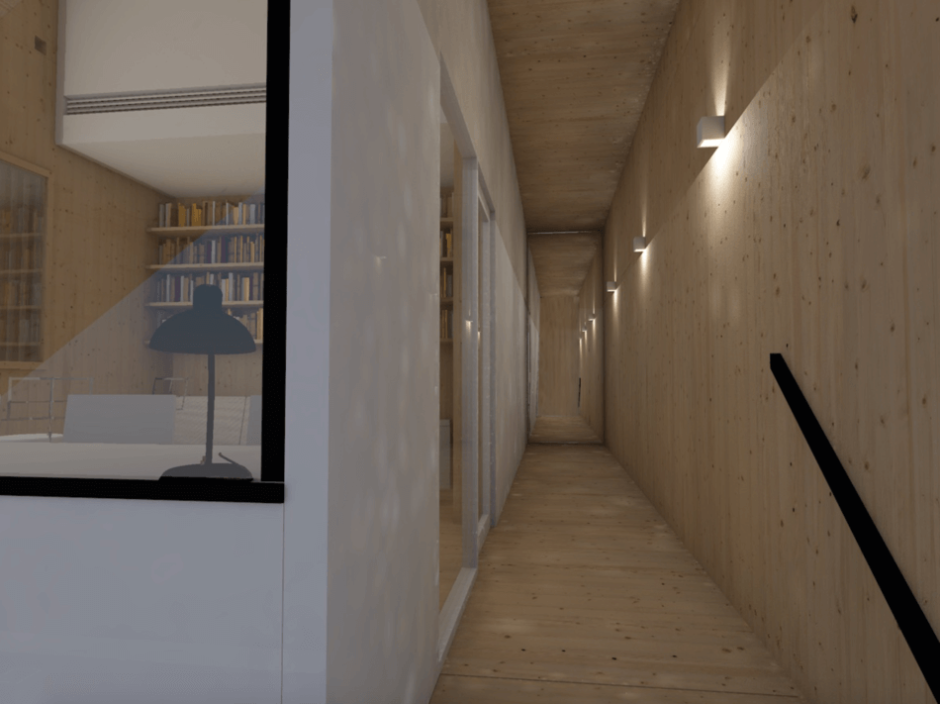 |
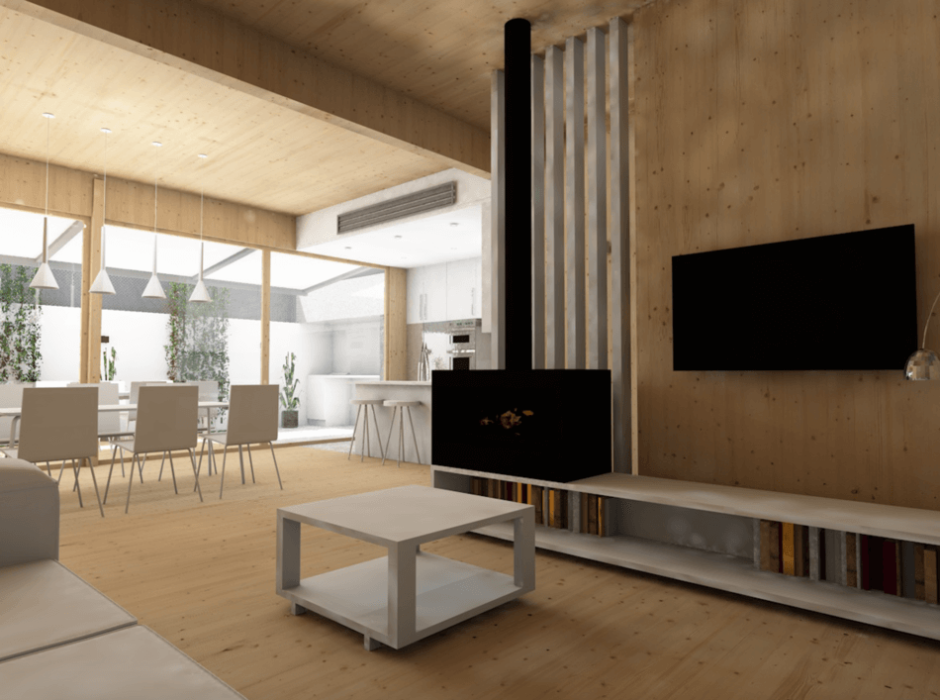 |
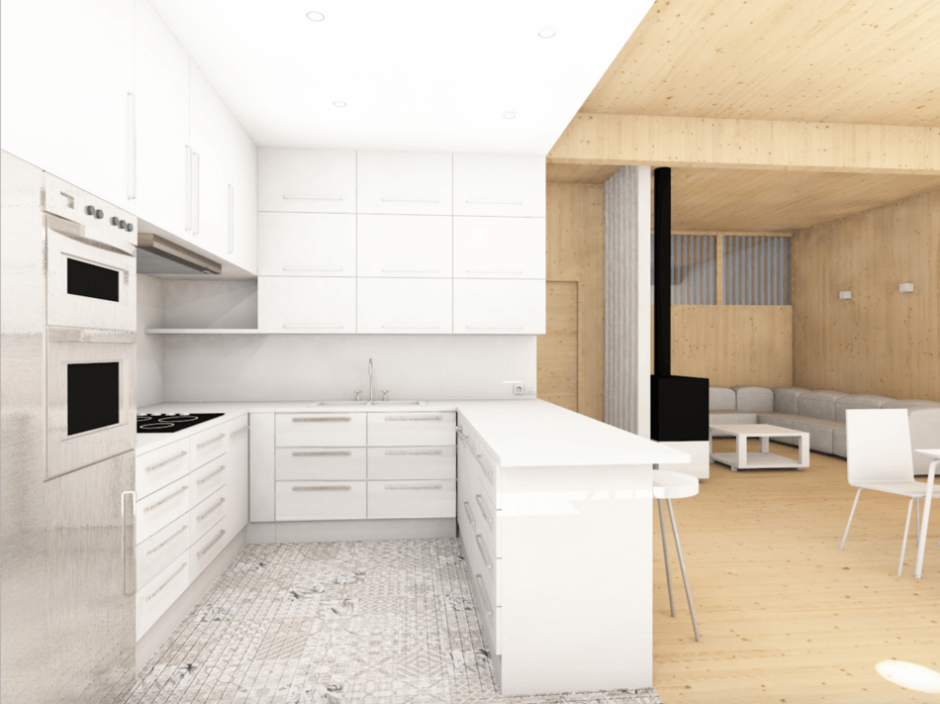 |
© Graphisoft
